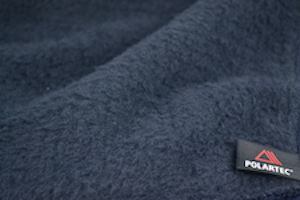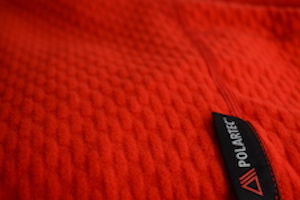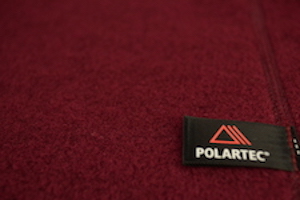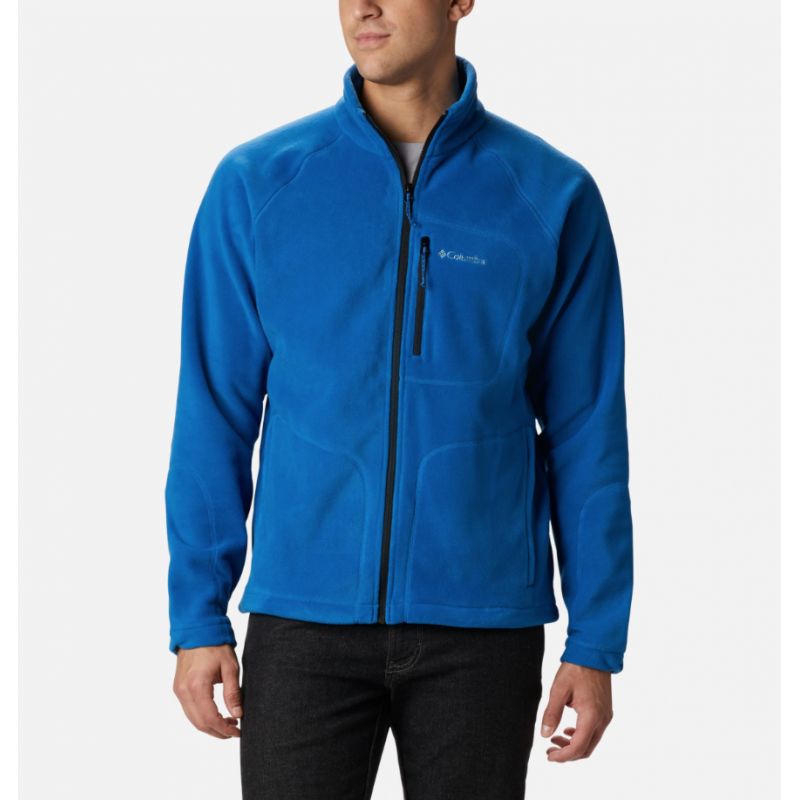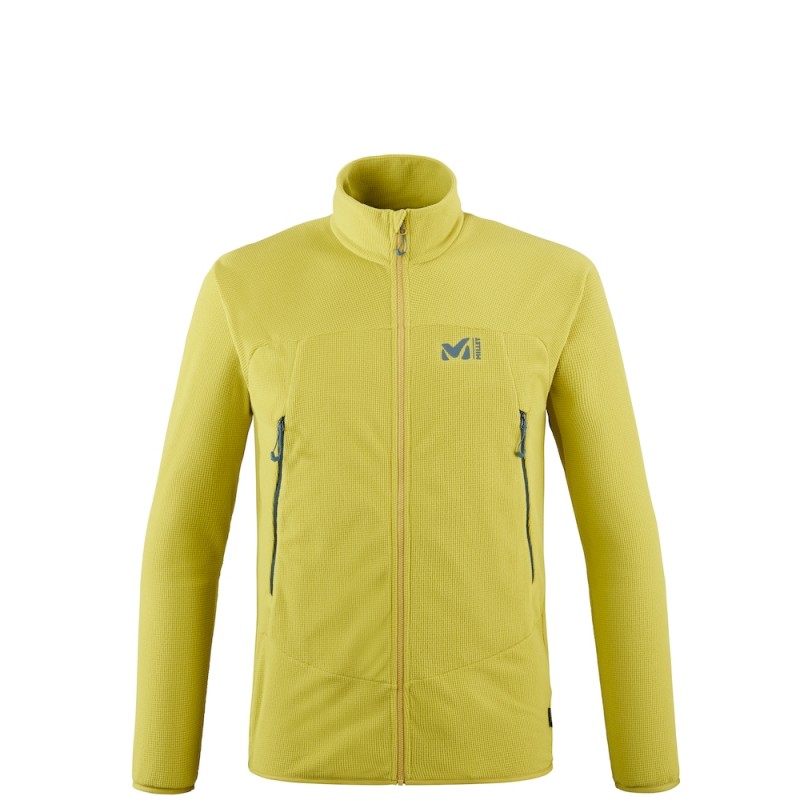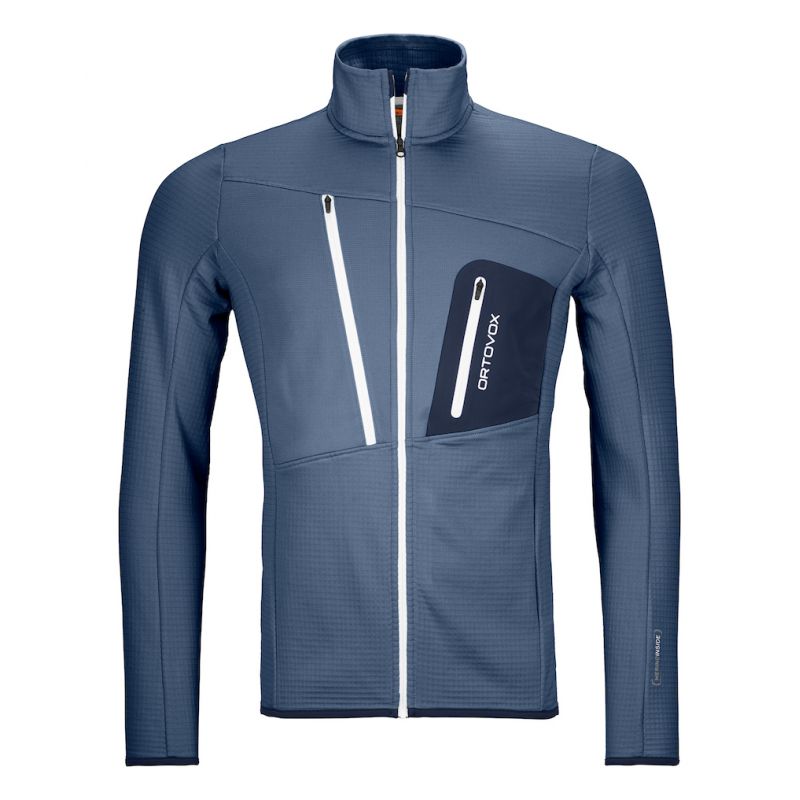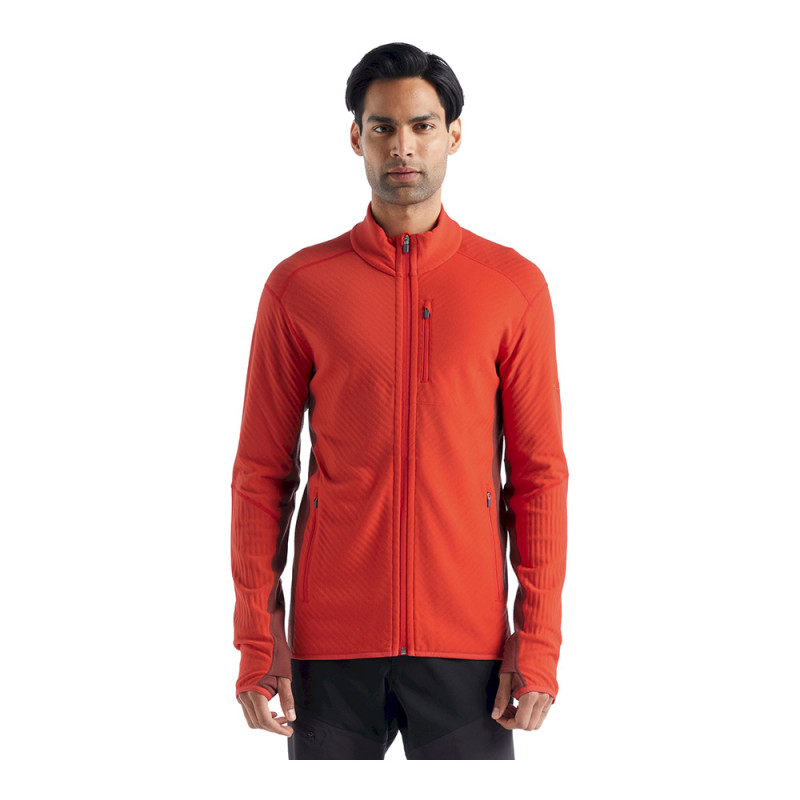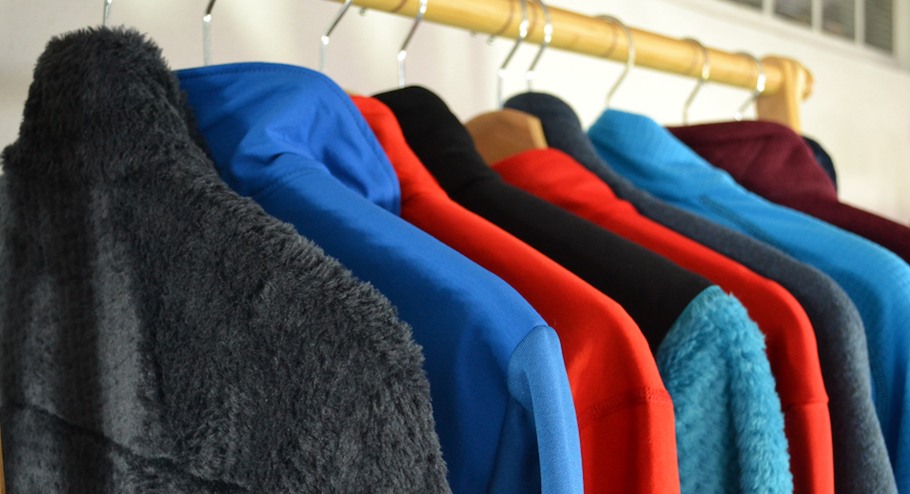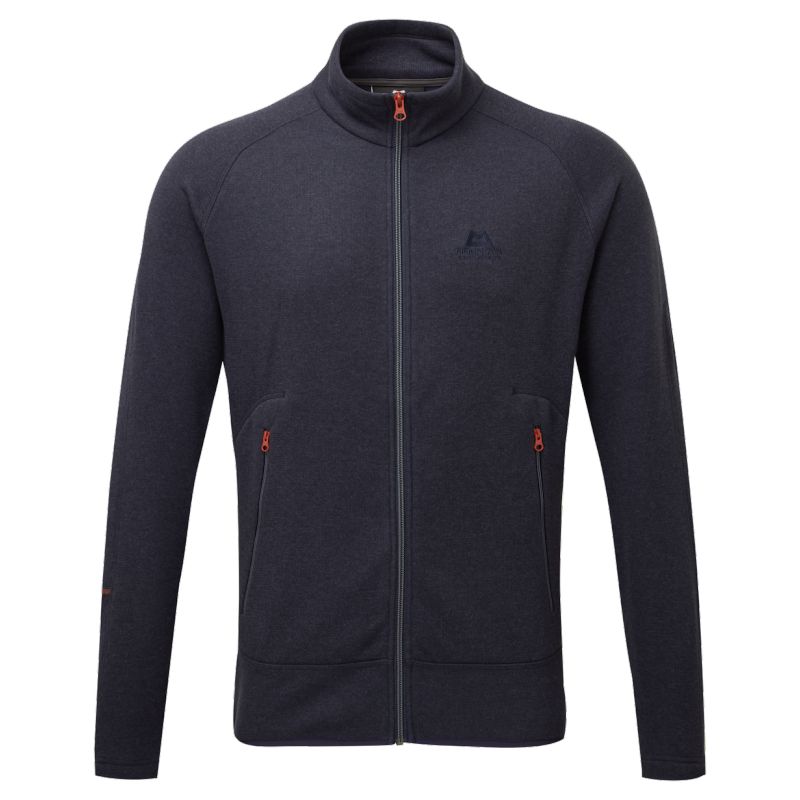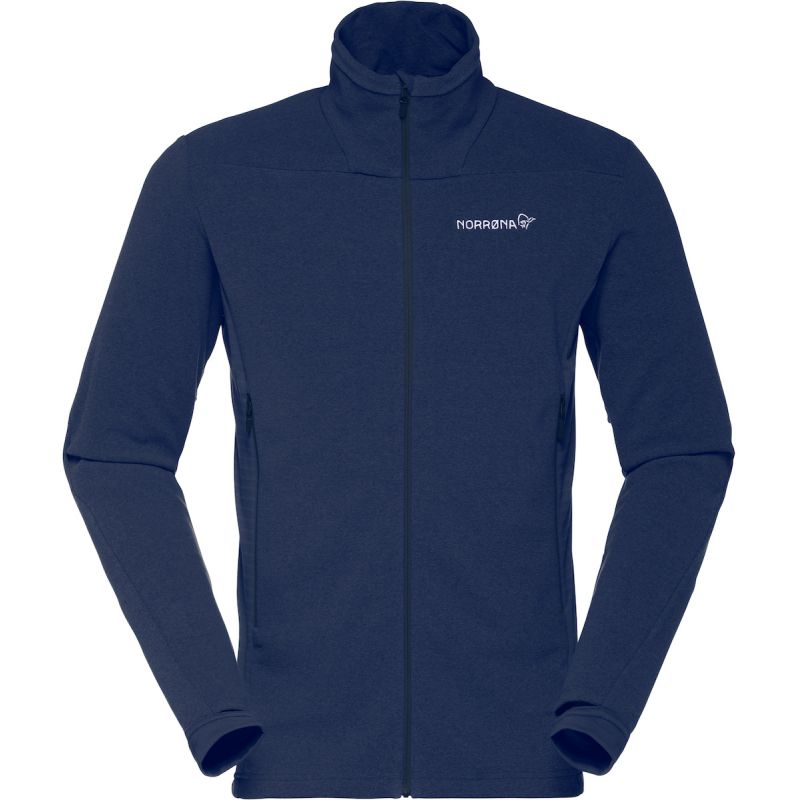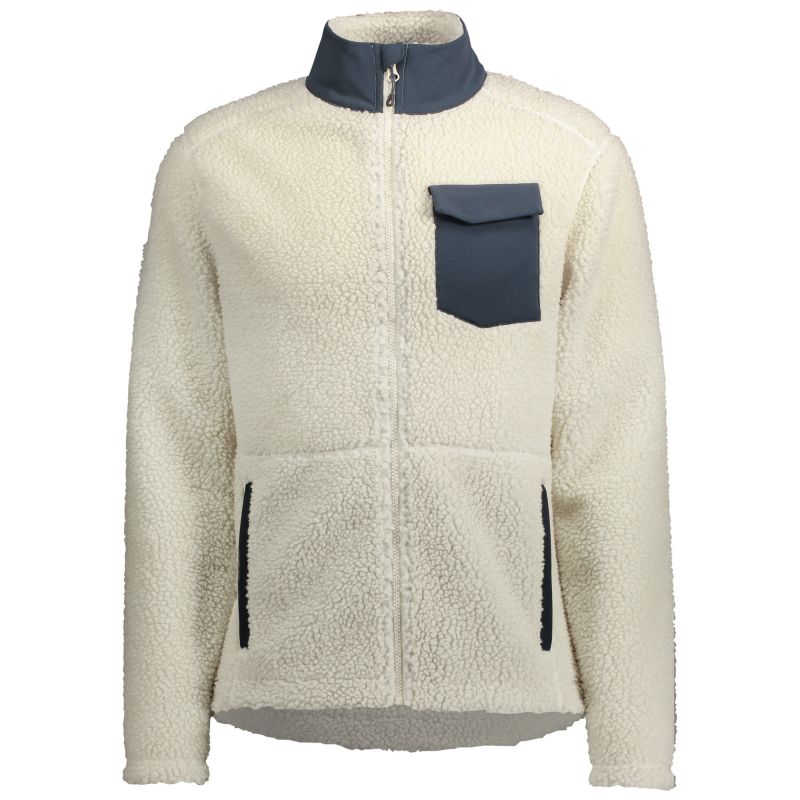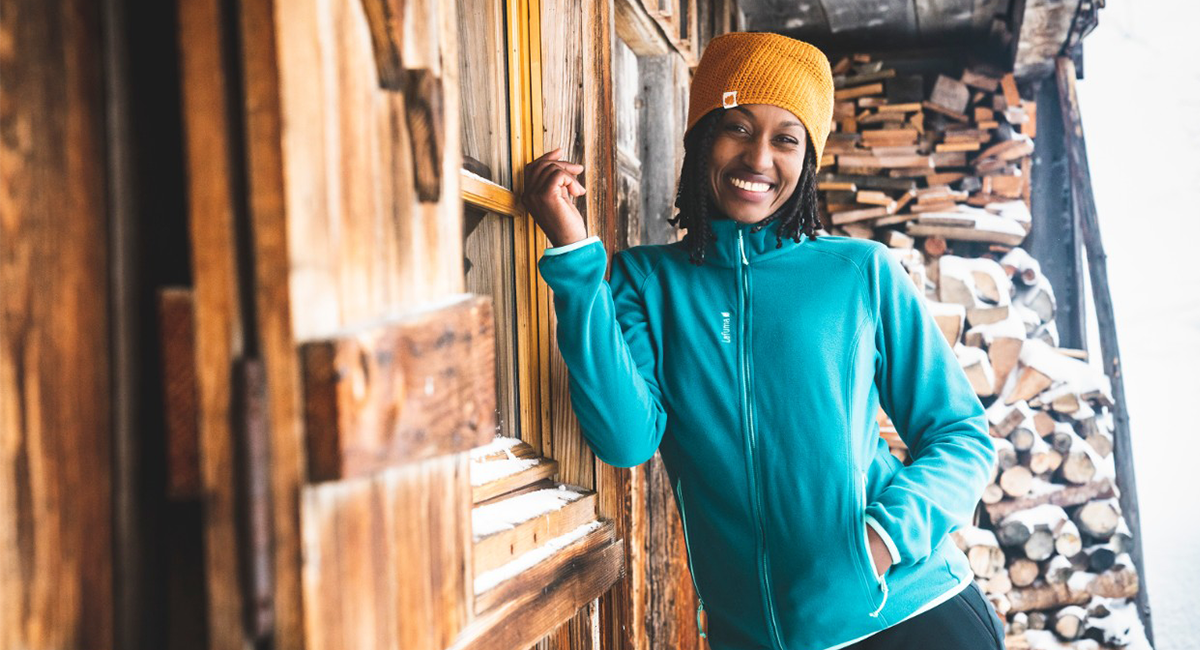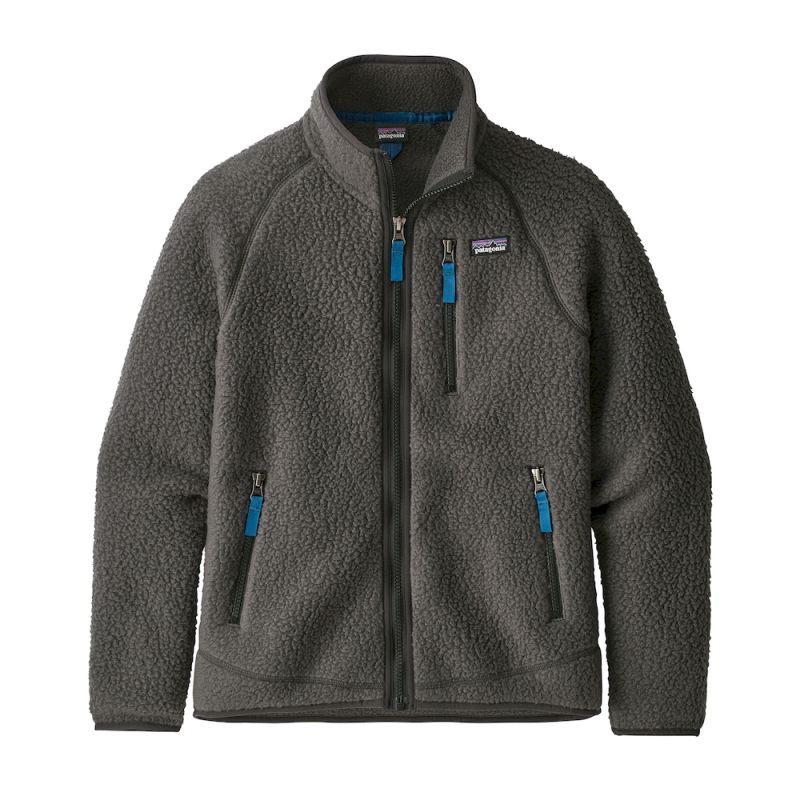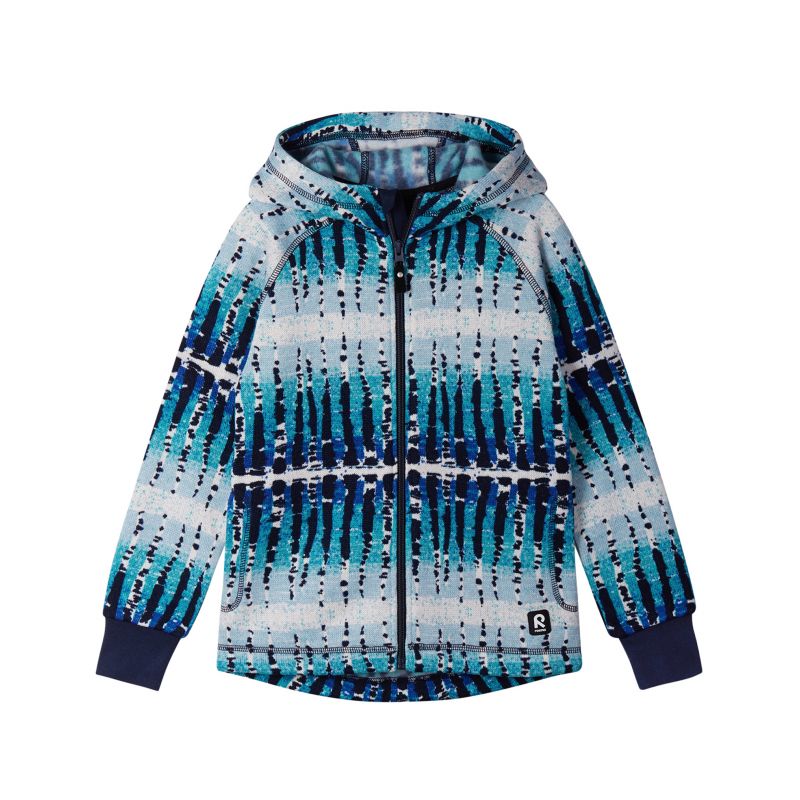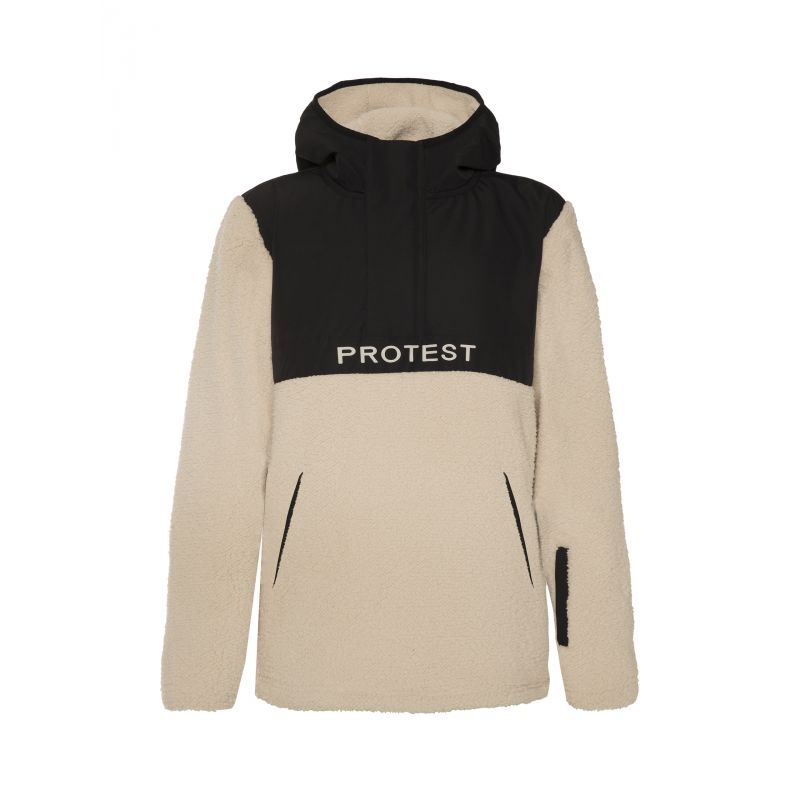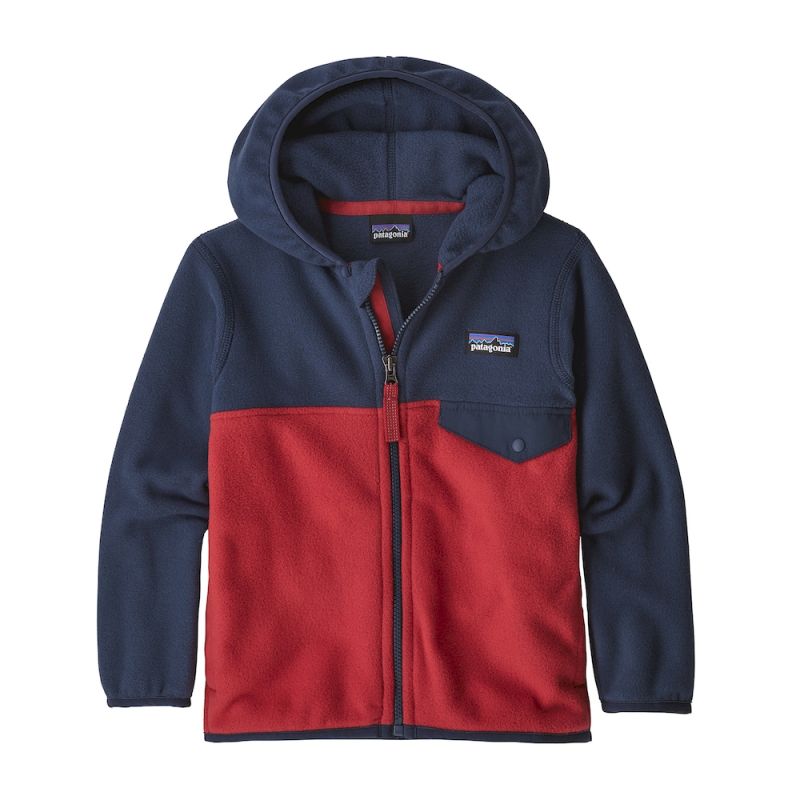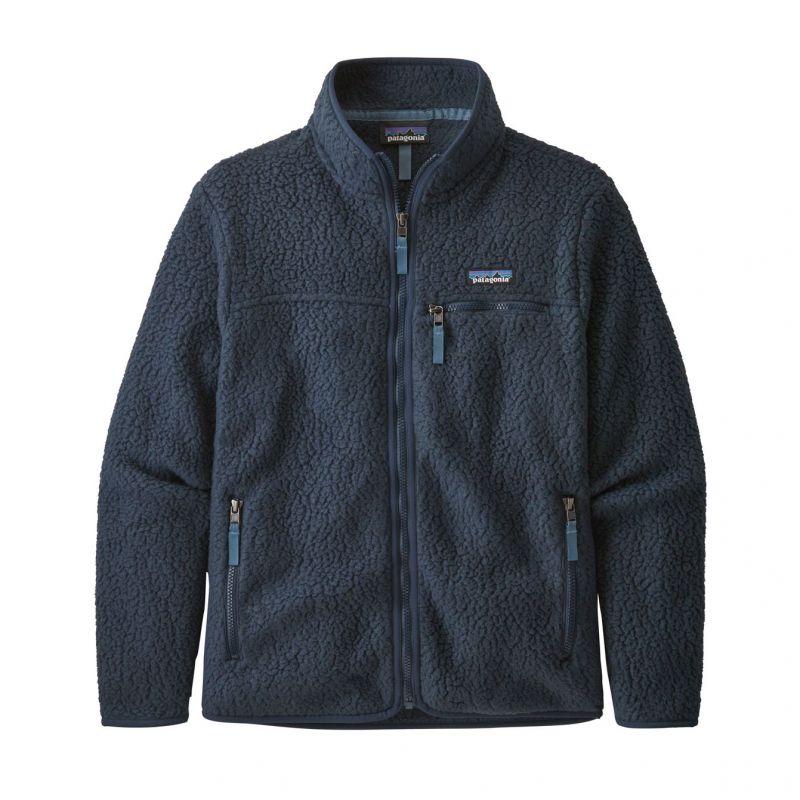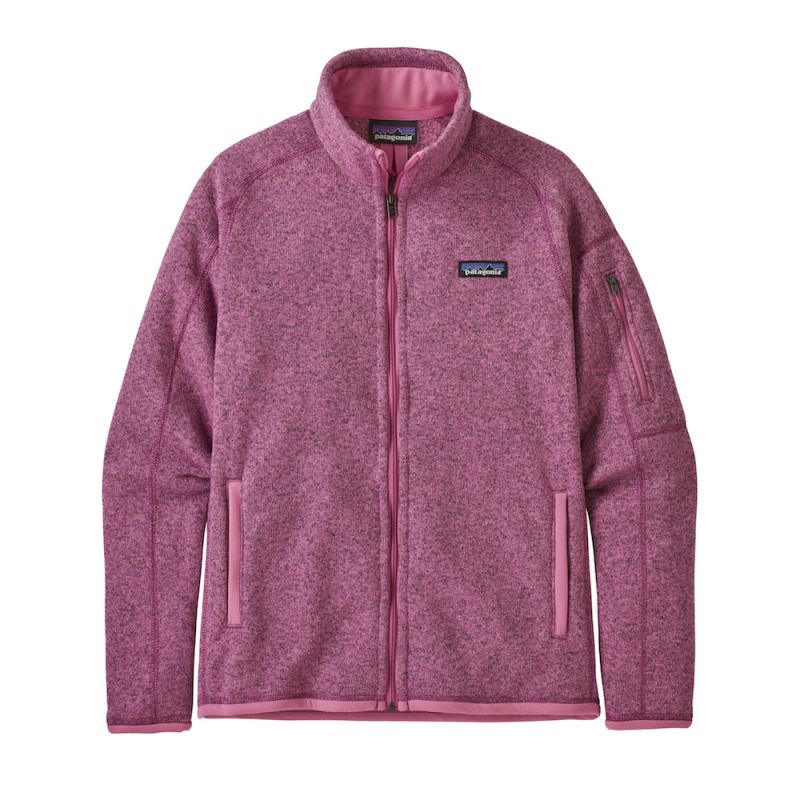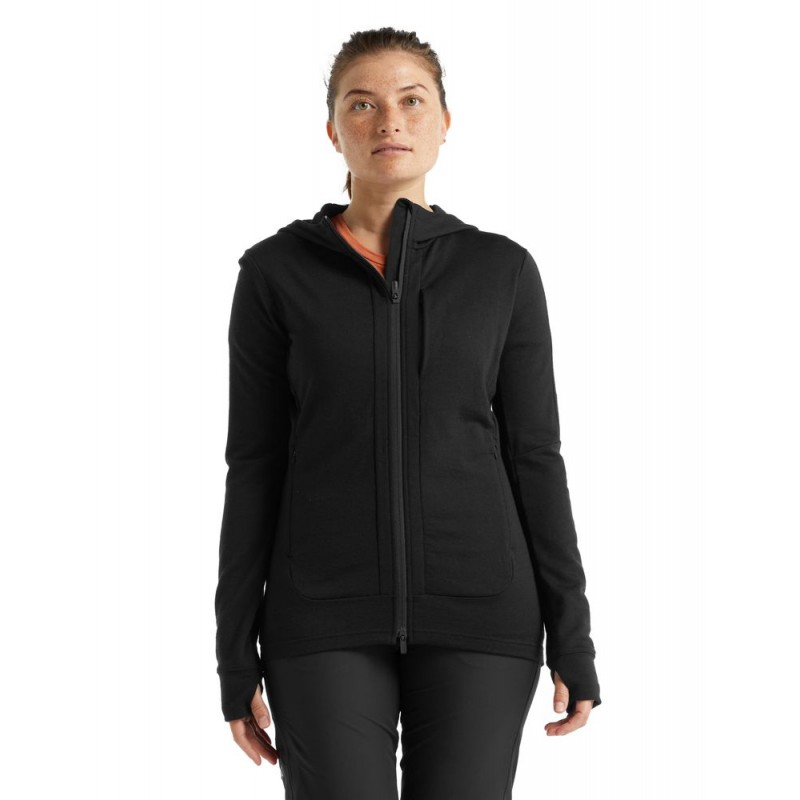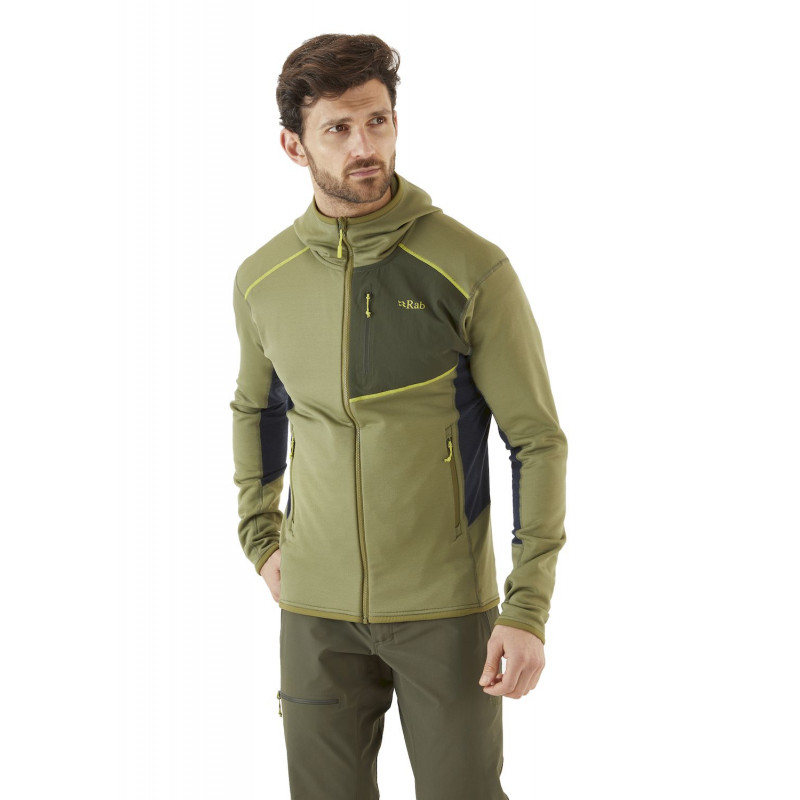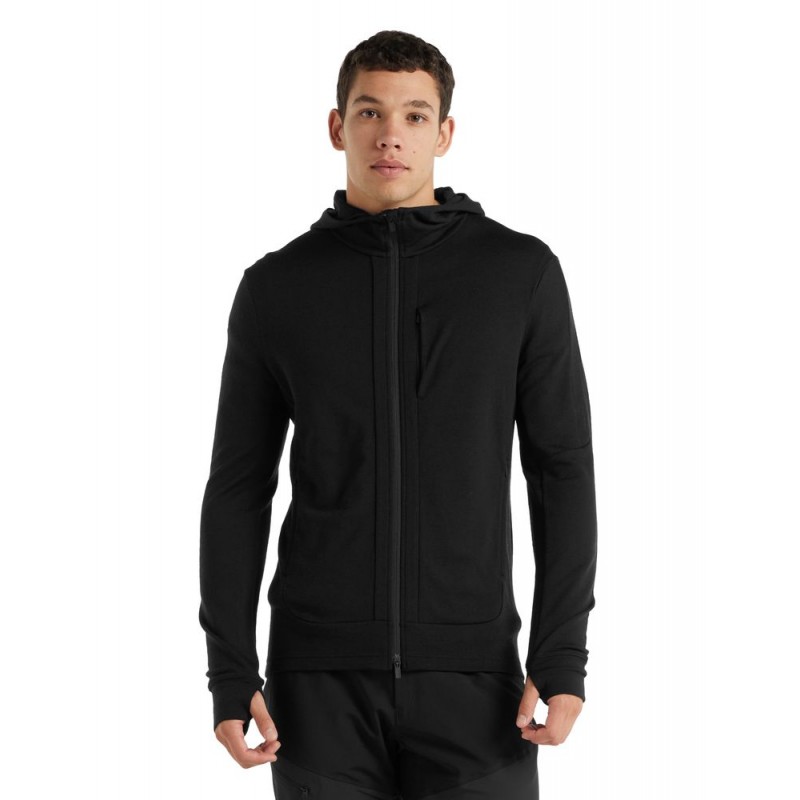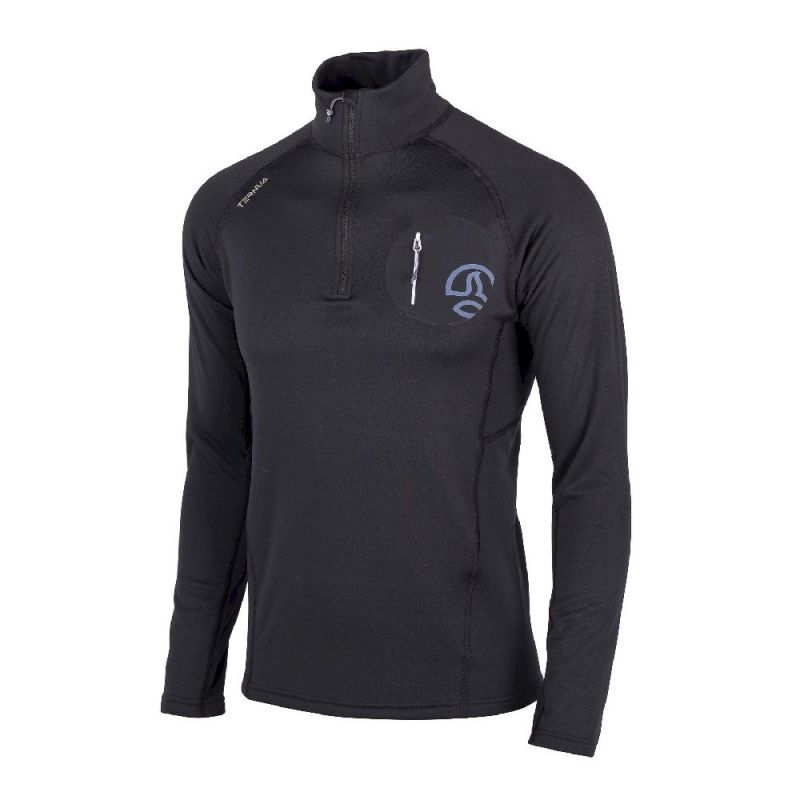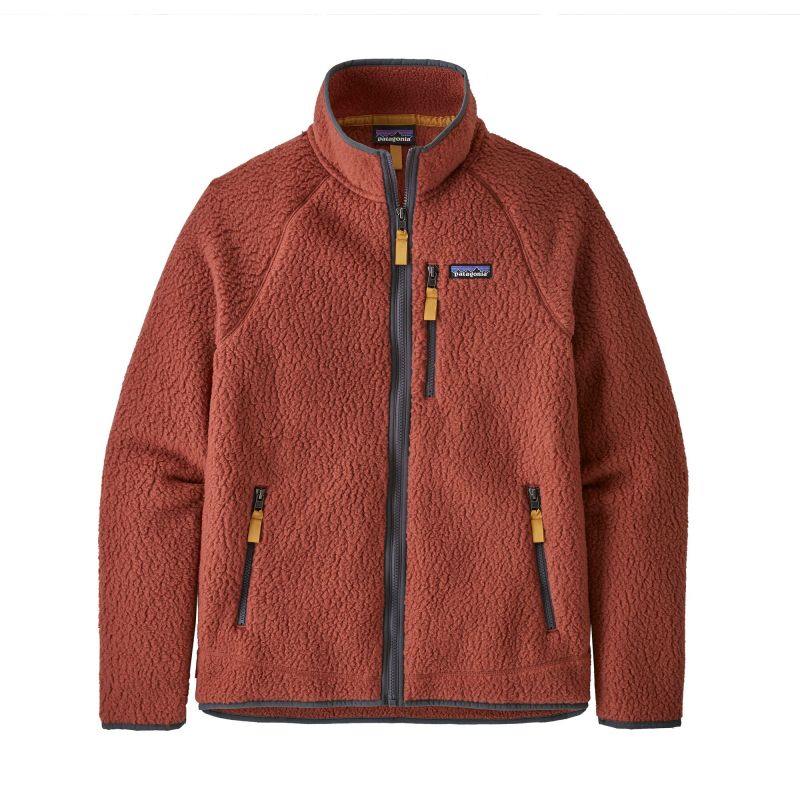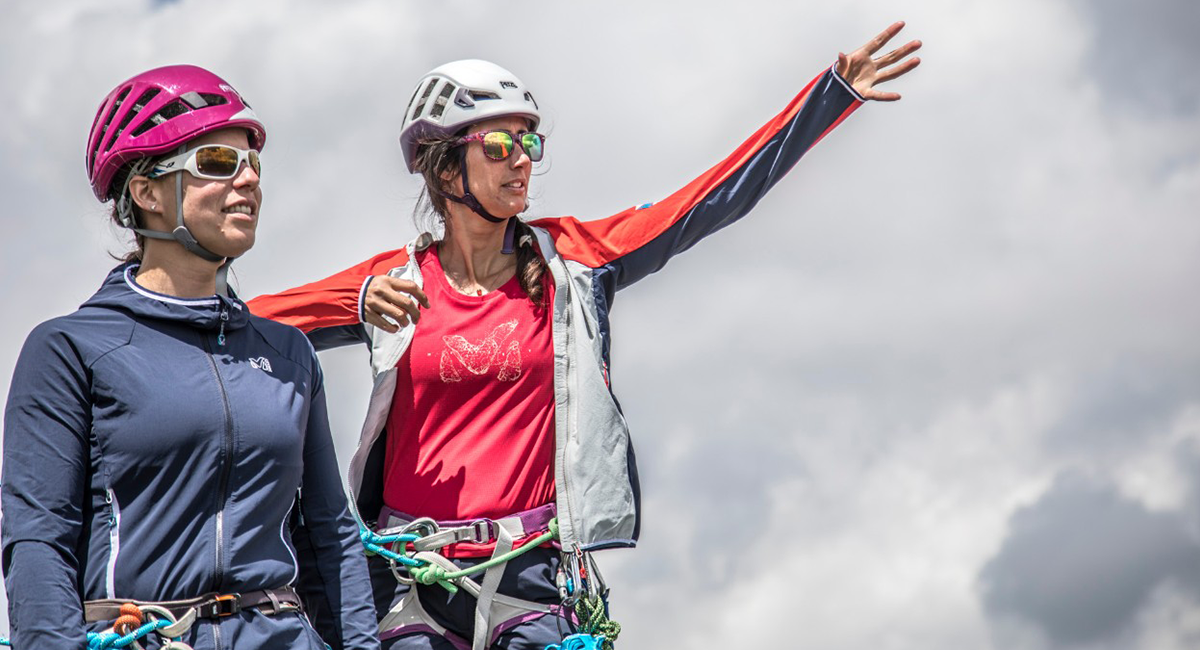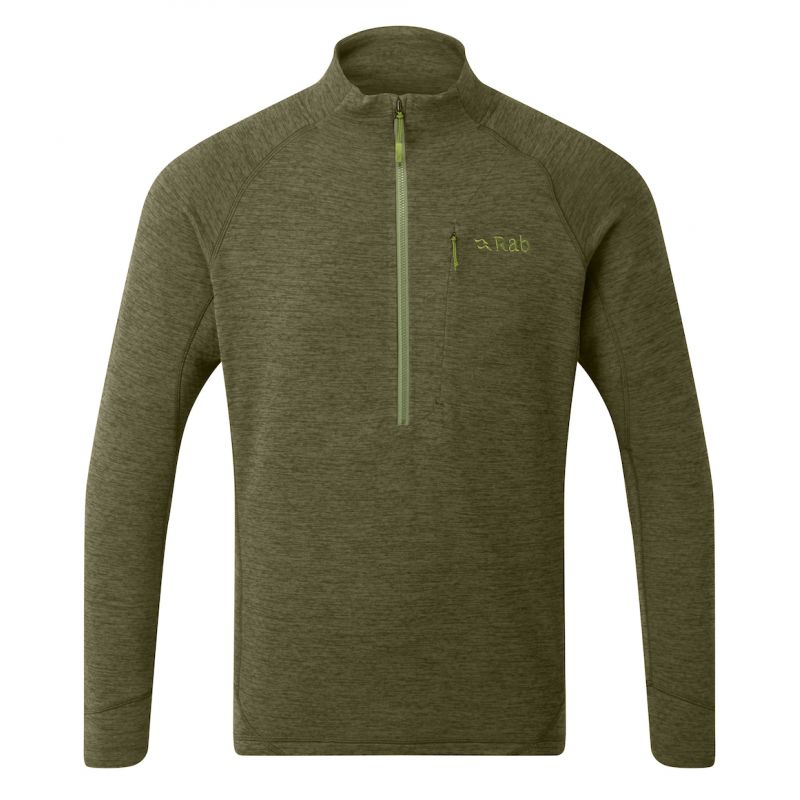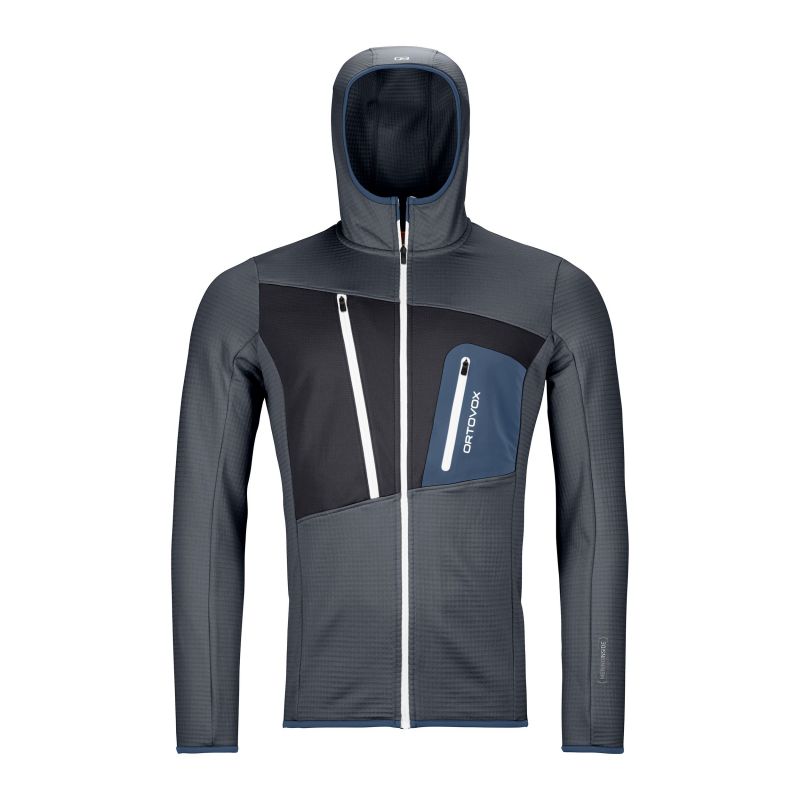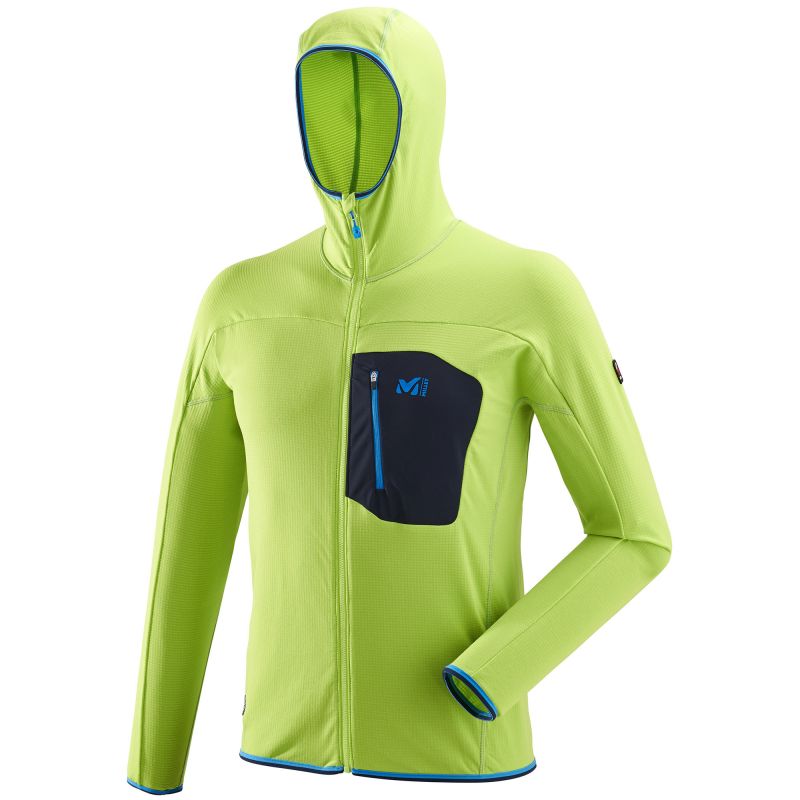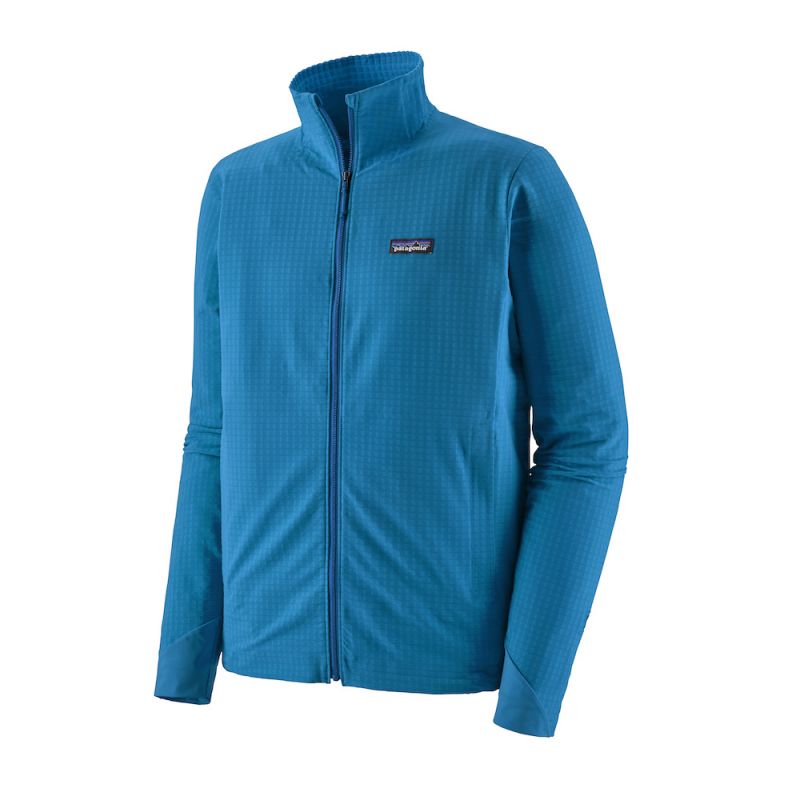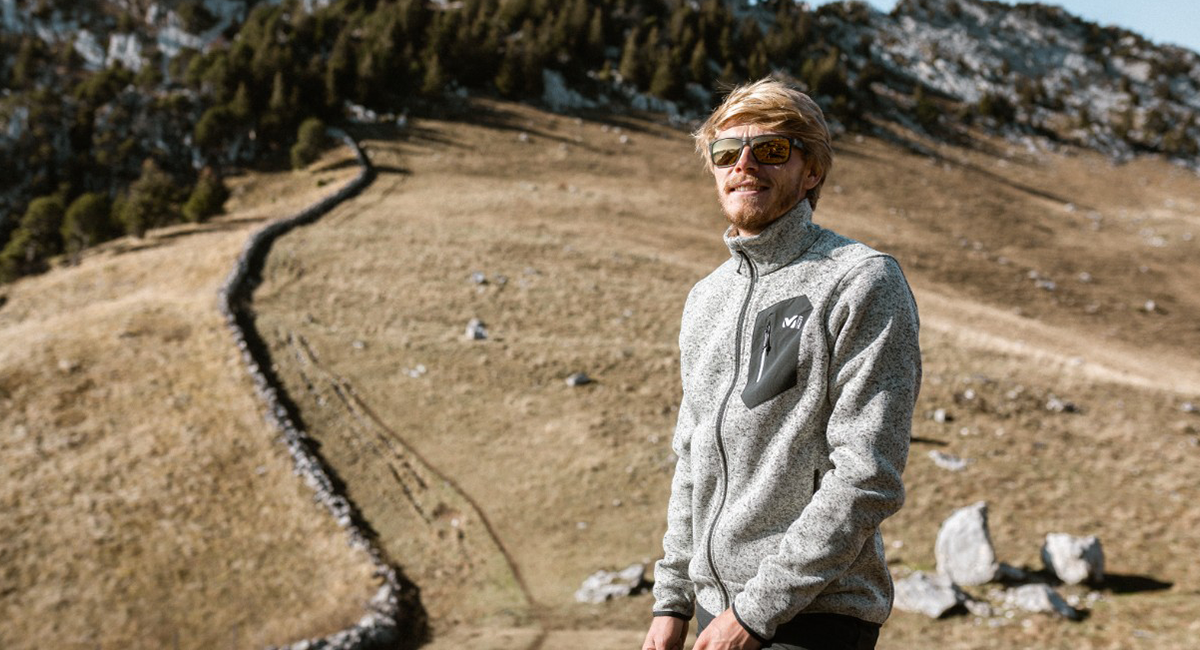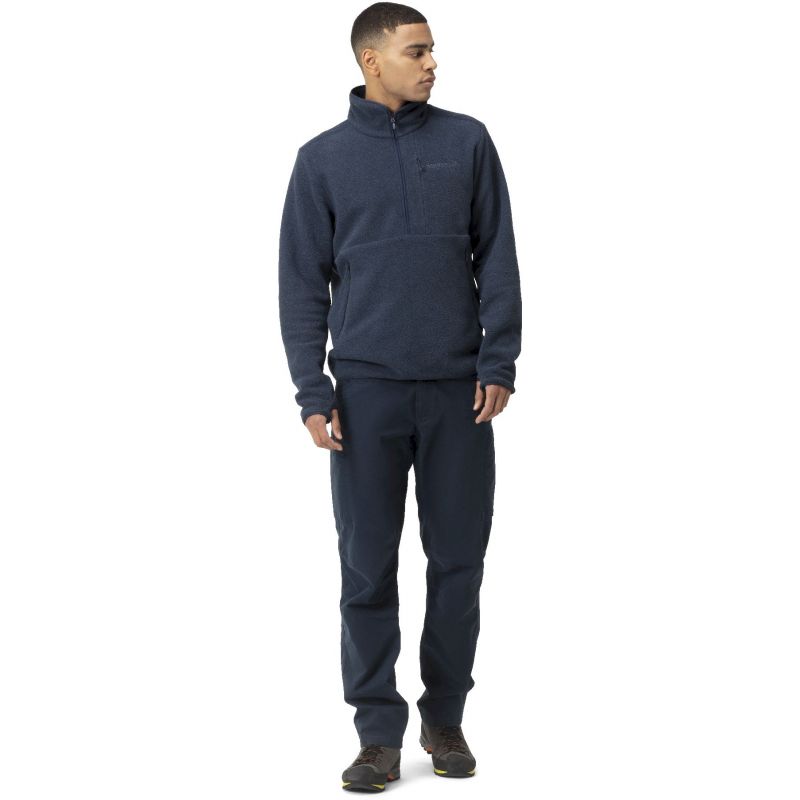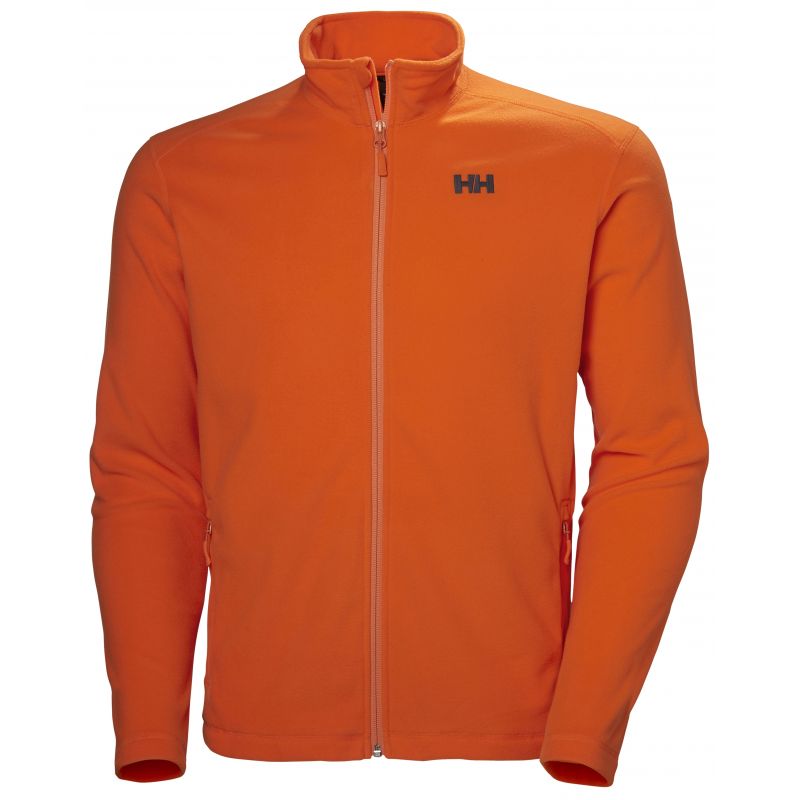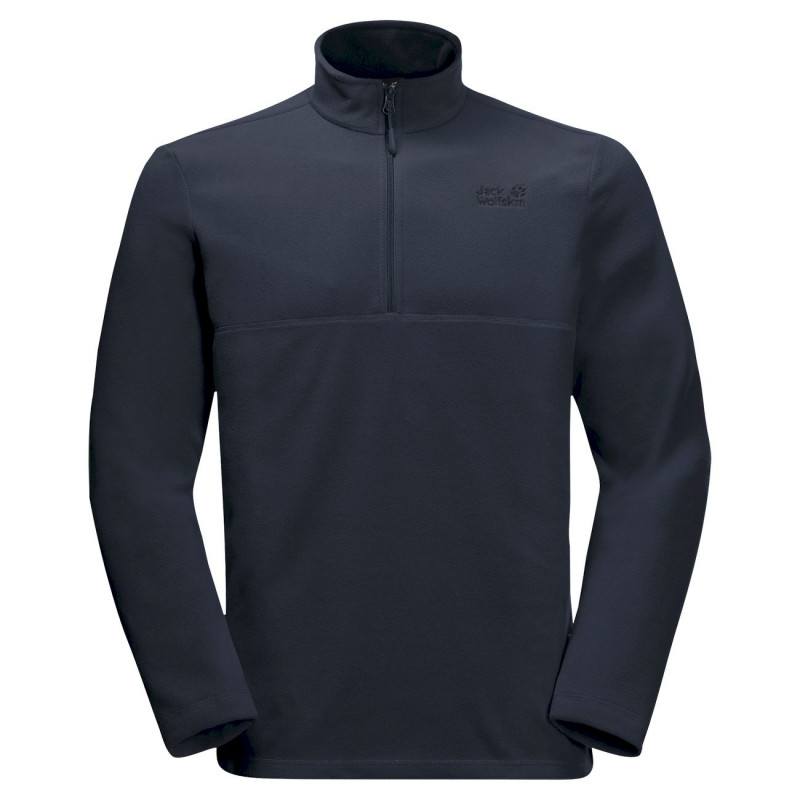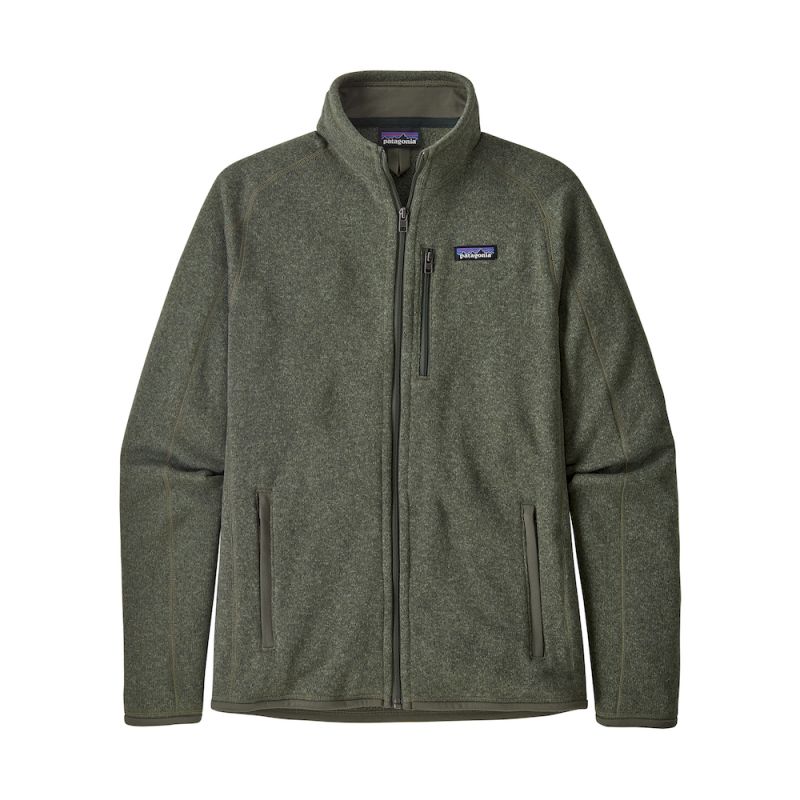Whether it's for a short Sunday hike, a cross-country ski outing, a via ferrata with friends or simply to go to the market on Sunday with the family, what could be more comfortable than a fleece jacket? Indeed, the days can still be cool and T-shirts are not enough! Warm and breathable, the fleece jacket is your ideal ally for enjoying your outdoor activities all year round. Yes, but here we are, faced with the very wide choice and the many technical specificities, deciding on your fleece jacket is not as simple as it seems. We offer you a brief overview of the selection criteria to take into account when choosing your fleece. We have also lent ourselves to the game and have prepared a selection of the trendiest fleeces of the moment. Helping you stay warm from dawn to dusk with this ultra-versatile jacket that deserves a place in every wardrobe.
- What is a fleece jacket?
- What kind of fleece is right for you ?
- Which fleece to choose according to your activity?
First of all… What is a fleece?
Originally, fleece is a fibre obtained from polyester which is then scraped many times to obtain a fluffy insulating surface. Its primary specificity: being a hollow fibre allowing each strand to store air, acting as insulation.
The history of Polartec® technical fleece
It was in 1981 that the Polartec® brand invented a new fabric which would later become a category of clothing: synthetic fleeces. It is a unique fabric that alone possesses all the aesthetic and comfort advantages that existed at the time; warmer, lighter, more breathable, soft and comfortable. A revolution in the way we dress outdoors is bound to take place.
Polartec® synthetic fleece not only changes the performance of garments used for outdoor activities; it revolutionizes the way of dressing. At the time, Time magazine even presented synthetic fleece as one of the greatest inventions of the 20th century. It was then that the biggest outdoor brands began to integrate fleece to increase the performance of their clothing. Then, the designers transform and modify the fleece in order to integrate it into their different clothing collections. Like shoulder pads or parachute pants, synthetic fleece defined the look of an entire generation. But unlike shoulder pads (and luckily for us), the versatility and efficiency of synthetic fleece has made it a timeless garment.The improvement of knitting techniques and the many research efforts of the Polartec® brand made it possible to produce ever more insulated fleece jackets that increase comfort and breathability, but also the warmth and softness of the fabric to the touch. Polartec® even succeeded in improving the raw materials used for the design of fleeces by imagining a technique of knitting top quality polyester yarns from recycled plastic bottles. It's the same process that saves billions of bottles from ending up in landfills. We told you, a revolution!
➤ Kid's Fleece Jackets - Shop
➤ Men's Fleece Jackets - Shop
➤ Women's Fleece Jackets -Shop
Today, Polartec® fleece covers many more people than outdoor sports enthusiasts. But it is in this universe that it has simply become essential. Polartec® fabrics are now used by the majority of major brands in the Outdoor industry: Millet, Lafuma, Patagonia, Norrona, Ortovox, Rab, IceBreaker, Columbia... For several years now, equipment manufacturers have also been developing their own technical synthetic fleece material to equip nature sports practitioners. Below, some examples of fleece materials developed by the French mountain equipment brands Millet and Eider, to create ever more innovative men's or women's fleeces:
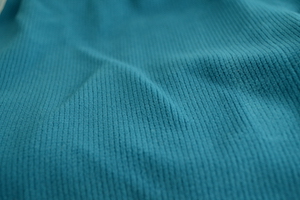 | 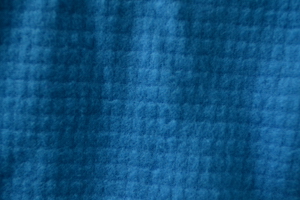 | 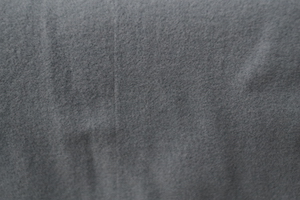 |
| Technostretch | Technopile | Thermosoft |
Why is fleece a real star in the outdoor world?
Historically, the entire mountaineering community dressed in a layer of cotton, wool and down that soaked up moisture. The outdoor brands then grasped the full stakes of the problem, and it was the Patagonia brand in particular that decided to use the polar fur sweater worn by fishermen in the North Atlantic. This fleece fabric is particularly suitable for the mountains because it retains heat without absorbing moisture. This discovery marks the end of wet wool on the shoulders of outdoor sports enthusiasts and the birth of a successful product that has become essential in mountain huts around the world.
➤ Hiking Fleece Jackets - Shop
Varied ranges of fleeces adapted to each activity.
That's it, you are determined, more than ever, to find the fleece jacket you need, and you go to the store or on the internet to equip yourself from head to toe. But there you go, there are a ton of different fleeces: long or short, fitted cuts or loose cuts, short hair or long hair... You're spoiled for choice, but you don't know where to look for anymore.
In recent years, the world of fleece has been very innovative. Many techniques and technologies have emerged to cover different uses. Hence, one of the essential questions to ask yourself: for what use and what practice do you need a fleece jacket? Whether it's for a short hike, a long trail, or simply "to be warm at home" (everyone can do what they want after all), you're bound to find what you're looking for.
Thin, intermediate or thick: which type of fleece is made for you?
To find your way around, just remember that there are 3 types of fleeces classified according to their weight (density), which is the primary indicator of the degree of heat.
You will find thin fleeces (100g/m²), intermediate fleeces (200g/m²) and finally thick fleeces (>300g/m²). As you will have understood, the thicker your fleece, the warmer it will be… but also the heavier.
Manufacturers tend to use a little more technical vocabulary to refer to these ranges. Without necessarily being bilingual, remember these few expressions that will make your job easier later on:
- Thin fleece = Lightweight. Microfleeces fall into this category.
- Intermediate fleece = Midweight. These are the most versatile and widespread fleeces.
- Thick fleece = Heavyweight. These are the warmest fleeces. Highloft (long-haired fleeces) fall into this category.
Lightweight Fleece | Midweight Fleece | Heavyweight Fleece |
Index 100 (100 g /m²) | Index 200 (200 g /m²) | Index 300 (300 g /m²) |
Spring season -summer or very intense activities such as Nordic walking or ski touring. | Versatile fleece. Moderate or low-intensity in cold weather (0°C and 5°C) | For activities in cold weather or little mobility (from mountaineering to bivouac) |
Compact and breathable, microfleeces are essential on your shoulders or in the bottom of bag. | Midweights offer a wide choice of loose or fitted cuts. You choose ! | Warmest fleece, but less breathable! Long hair retains air and Therefore heat. |
Choose a fleece according to your activity: hiking, climbing, mountaineering, skiing...
I am looking for a fleece jacket to keep warm every day and at home
For sportswear use (i.e. "non-sporty" ), it is advisable, as seen above, to remember that there are 3 types of fleeces classified according to their weight (density) corresponding to the degree of heat. You will find thin fleeces (100g/m2), intermediate fleeces (200g/m2) and finally thick fleeces (>300g/m2).
Beyond the heat, it will be your morphology and the look you want to have that will determine your choice!
Two options are available for you:
- A loose shape: ideal if you don't like to be tight, if you have an A or H shape, if your first layer (your first garment next to the skin) is quite thick or simply if you like it when your jacket falls below the hips.
- A fitted shape: ideal if you are looking for something more aesthetic, if you like to wear your clothes close to the body, if you are chilly or if your 3rd layer (coat or other) is already thick enough.
In terms of look, it is the finishing touch that will guide your choice. Are you more with or without a hood? Do you prefer full closure to wear your fleece like an open fleece jacket, or half-zip to wear it like a sweater? Do you need pockets to slip your keys inside or even your laptop? Are you more flashy or all-purpose? At this stage, you are the only one who can decide. You can always ask those around you for a little advice…
Hardloop has nevertheless made a small selection of the most “coveted” fleeces of the moment, those that will always please as a Christmas present.
Children's fleeces:
Fleeces for Women:
Fleeces for Men:
A fleece for intensive outdoor sports: mountaineering, climbing, Nordic walking. ..
There, your choice becomes a little more complex and you will have to take into account several elements. First, you must look into two fundamental questions:
- Are you chilly?
We are all designed differently and we are not equal before certain phenomena. Just ask yourself the right questions before investing: do you easily get frozen fingers when you're skiing? Do you wear a fleece even at work when your colleagues are in T-shirts? Do you shiver when you eat at your best friend's house? (you constantly tell him that his house is poorly heated). Do you sleep with a hot water bottle?
If you answer at least 2 of these questions in the affirmative, then go for a heavy weight, even if it means having a slightly heavier fleece.
- Do you sweat easily when hiking or running?
No shame to have, we are also unequal in the face of this phenomenon. And it's better to know yourself well because doing an activity with a constant trickle of humidity on your back is not very pleasant… Not to mention that during the break, you risk catching quite a cold snap.
If you belong to this category, then turn instead to fleeces where you can adjust your moisture transfer: look at the number of vents and their location (under the armpits, on the sides, etc.), take a full zip instead a half-zip (easier to open and let in some air in case of overheating). Also opt for "stretch" ranges which are specially designed for intensive sport, and which will guarantee you better thermoregulation.
Once you have answered these two fundamental questions, ask yourself about the sport(s) you want to practice, and above all, in which season(s)!
- What sport do you practice? Ski touring, climbing, mountaineering, Nordic walking...
Do you practice one or more sports activities during which the effort can be intense? Even if we tend to prepare for the "worst" (temperatures below 0° can impress), it is better to opt for a breathable fleece because your body heats up much faster than you think. Also pay attention to the weight of your fleece jacket: if you ever have to slip it into your hiking bag, it's better to have something fairly light and compact.
To guide your choice, you must also be uncompromising on the freedom of movement that your future fleece jacket must offer you: as mentioned above, orient yourself towards "stretch" ranges, ideal for sports such as climbing, mountaineering, or ski touring… Take a good look at the composition. It is the elastane parts (especially under the arms and at the wrists) that provide this effect of freedom.
You can also turn to fleeces equipped with Polartec Power Grid®, the latest innovation in two-component mesh that uses different yarns for each side of the garment. In other words, you have one side to quickly wick moisture away from your skin, while the other side dries faster.
Good to know: depending on your practice, also think about the sleeveless fleece jacket, an old product that still proves its worth, very practical for sports such as cross-country skiing or Nordic walking: your arms have total freedom of movement necessary to use poles, and you benefit from the heat necessary during the effort.
A fleece jacket for practising a moderate outdoor sport: hiking, via ferrata, bike ride…
In moderate effort, your body will not have the same ability to warm up. Logically, you will sweat less (unless you have fun racing with your brother-in-law or your nephews). Thus, the criteria to look at first are the degree of warmth (we come back to the famous weight) as well as the interior comfort that the fleece can provide you with: a fine mesh, a "velvet" texture,...
If you love being wrapped up in your fleece as if you were in your pyjamas, opt directly for the new generation of long-haired fleeces, nothing warmer and cozier. Principle inspired among other things by the observation of animals in the mountains (such as bears), this fleece jacket contains more air than a classic fleece and therefore brings you even more warmth.
To make your choice, do not hesitate to contact us and ask us your questions!
A little word at the end:
Beyond your practice, you can also choose your fleece according to its environmental impact...
And yes! Good news, today our favourite outdoor brands are increasingly using recycled materials. A good example is Patagonia, which uses mostly recycled polyester to create its men's and women's fleeces. This material is created from post-consumer recycled (PCR) plastic bottles. Other recycling processes from soda bottles or even used clothing are at work.
Do you have a question about one of the fleece jackets mentioned in this article, or do you want to know more about fleece jackets? Do not hesitate to contact our HardGuides who will be happy to advise you by phone on the +33 (0)1 84 67 14 24 (free call) or through our Help Center.
➤ Hiking Fleece Jackets - Shop
--------------------------------------------------------------------------------------------------------------------
High Loft*: Polartec High Loft fabric was created to develop and improve the benefits and applications of fleece technologies. Using high-loft fibers allowed us to design a surprisingly soft and airy structure that compresses and stores easily in a small space. The elongated fibers create large air pockets that retain heat optimally and provide the highest warmth-to-weight ratio of any fleece fabric available today.
Power Dry**: Polartec Power Dry technology gives base layer fabrics increased efficiency, more reliable wicking properties, reduced drying times and better overall performance. Not all base layer fabrics are created equal; many have chemistry that can only wick away moisture temporarily, and fades and weakens after each wash. By developing a fabric that mechanically wicks away moisture with our patented two-component structure, we've invented a premium material that draws moisture away from the skin, wicking it away for faster evaporation and lasts the life of the garment.
Thermal Pro***: Polartec Thermal Pro fabric was designed to bring synthetic fleece technologies to a wider variety of styles and functionality. By reworking our construction methods, we have created a wide range of fabric structures, which offer superior benefits over traditional fleece. These unique textures enhance the overall effectiveness of the fabric; that's why synthetic fleece will always be the preferred choice for performance insulation fabrics.
Crédits photos : ©Hardloop ©Millet ©Lafuma


